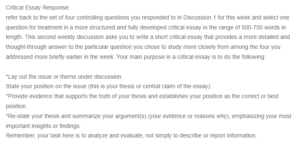Critiquing Virtue Ethics
Rosenstand avers that moralizing is a combination of good virtues of decency, honesty, civility, and others. He further states that morality carries two meanings for most of us. On the one hand, it is a combination of positive virtues of guidance, humanitarianism, goodness, and so forth. The term is also associated with negative aspects such as repression, bigotry, and oppression. Based on Rosenstand’s position above, there is no universal standard of right or wrong.
Sommer offers a helpful repudiation of moral and ethical relativism, which is relatively straightforward. She discourages people from focusing on complex topics that define society’s social spectrum. Matters such as abortion, capital sentencing, and euthanasia are quite emotive, but people are focused on debating them as they try to find common ground. However, Sommer encourages people to focus on simple but crucial matters, such as teaching young ones about friendship, respect, compassion, and honesty (Hursthouse and Pettigrove). If everyone, including children, learns about such issues while young, it is possible to create a society where everyone pays attention to each other’s wellness, hence creating a moral world. For Sommer, virtue ethics is more than a social policy; it is rather private morality. It is not possible to establish morality in government or public institutions if it is not entrenched in individuals. Sommer’s viewpoint aligns with Rosenstand’s position that it is not viable to establish a universal standard of right and wrong, as this is a highly individualized matter.
I believe Sommer’s view is satisfactory and convincing, even though Rosenstand feels that it is old-fashioned and backward. Everyone is responsible for the decisions they make (Rosenstand, 383). Since children may not be able to make sound decisions, parents, educators, or anyone responsible for children should be able to instruct them to pursue positive ways of living. That way, the young ones will build consciousness such that they can approach issues they face in day-to-day living with the utmost consideration. People make right and wrong decisions in life, and it is everyone’s responsibility to learn from these mistakes and live positive lives.
Even with the diversity that characterizes the modern world, people should adopt positive living and focus on the good side of living. Even with the diverse cultures, respect and treating people well are standards that are uniform across the globe (Rosenstand 120-121). Sommer’s viewpoint, therefore, shares the commonality of virtue ethics. Virtue ethics define an individual, and they should be seen as such to avoid doing wrong. Sommer discourages people from looking at ethics as rules and expectations. Instead, one should see them as essential human virtues that are key to living a wholesome life. Sommer encourages people to learn virtue ethics since they are not a matter of historical relativism but core values of living well with others.
In summary, there is no universal standard of wrong or right. Rosenstand’s position on moralizing and Sommer’s viewpoint on virtue ethics are vital guides to living a moral and ethical life as private individuals. On the one hand, Rosenstand avers that moralizing is about embracing positive virtues such as honesty and respect. Rosenstand also says moralizing may concern negative aspects such as repression, bigotry, and oppression. On the other hand, Sommer emphasizes why virtue ethics are not relative. Despite the diversity witnessed today, basic principles of positive living, such as respect and honesty, apply across the spectrum regardless of where a person comes from. However, these virtue ethics are developed by private individuals and not society.
Works Cited
Hursthouse, Rosalind, and Glen Pettigrove. “Virtue Ethics (Stanford Encyclopedia of Philosophy).” Stanford.edu, 11 Oct. 2022, plato.stanford.edu/entries/ethics-virtue/.
Rosenstand, Nina. The Moral of the Story: An Introduction to Ethics. New York, McGraw-Hill Education, 2020.
ORDER A PLAGIARISM-FREE PAPER HERE
We’ll write everything from scratch
Question

Critiquing Virtue Ethics
Critical Essay Response:
refer back to the set of four controlling questions you responded to in Discussion 1 for this week and select one question for treatment in a more structured and fully developed critical essay in the range of 500-750 words in length. This second weekly discussion asks you to write a short critical essay that provides a more detailed and thought-through answer to the particular question you chose to study more closely from among the four you addressed more briefly earlier in the week. Your main purpose in a critical essay is to do the following:
*Lay out the issue or theme under discussion.
State your position on the issue (this is your thesis or central claim of the essay).
*Provide evidence that supports the truth of your thesis and establishes your position as the correct or best position.
*Re-state your thesis and summarize your argument(s) (your evidence or reasons why), emphasizing your most important insights or findings.
Remember, your task here is to analyze and evaluate, not simply to describe or report information.

